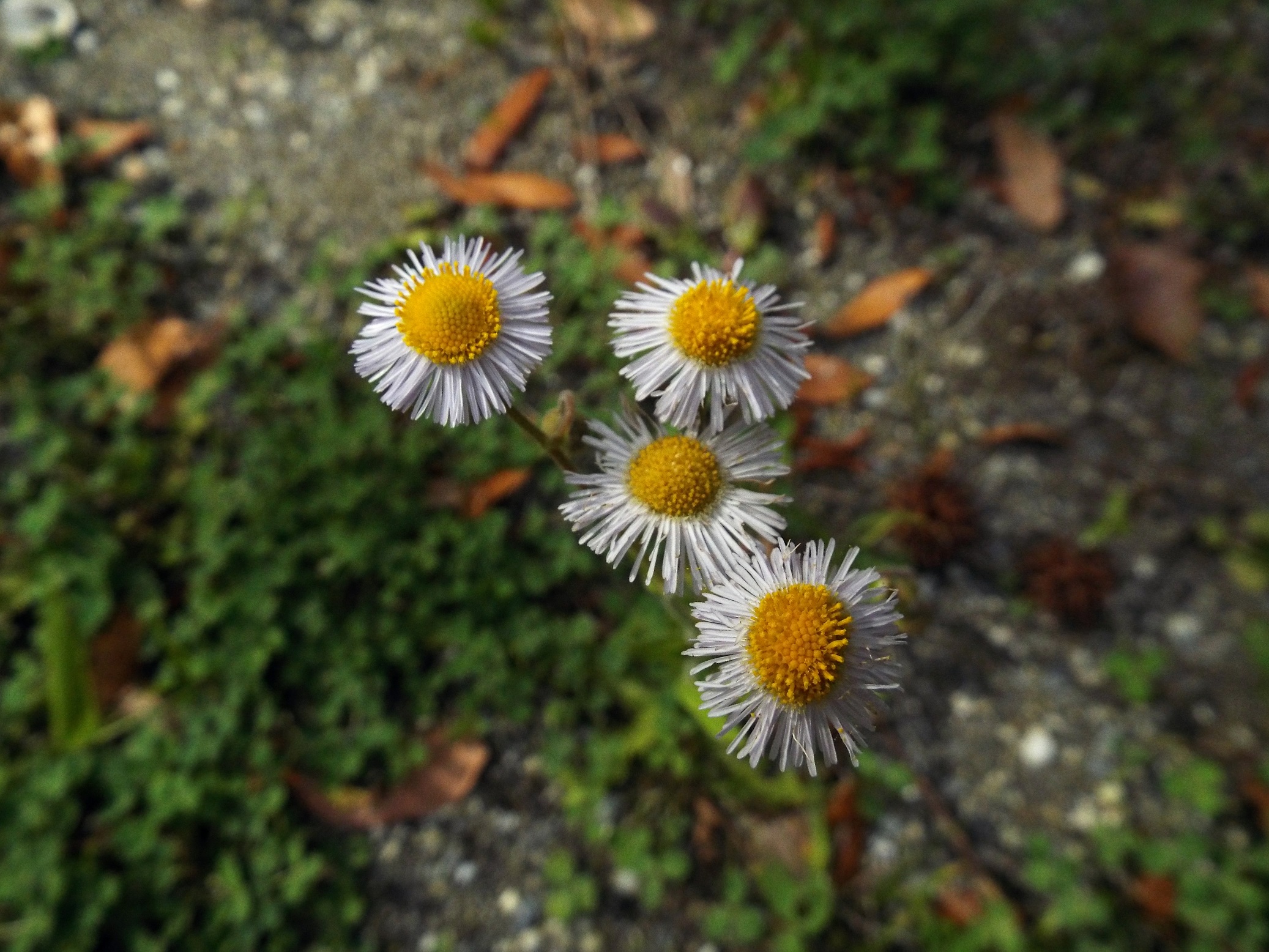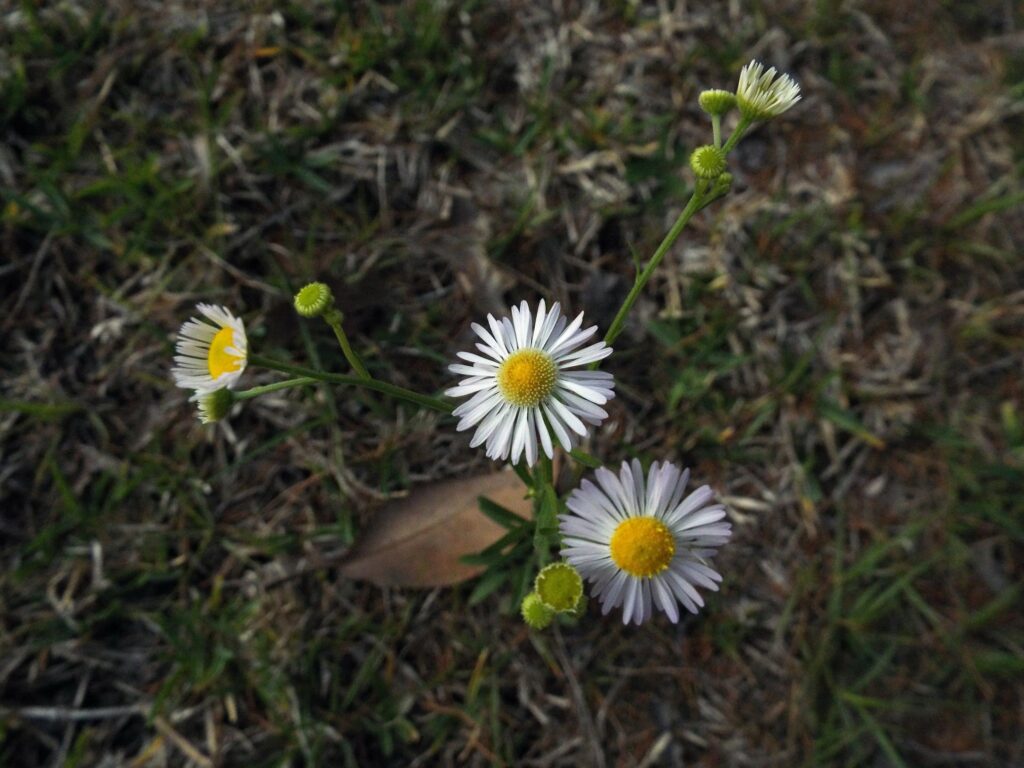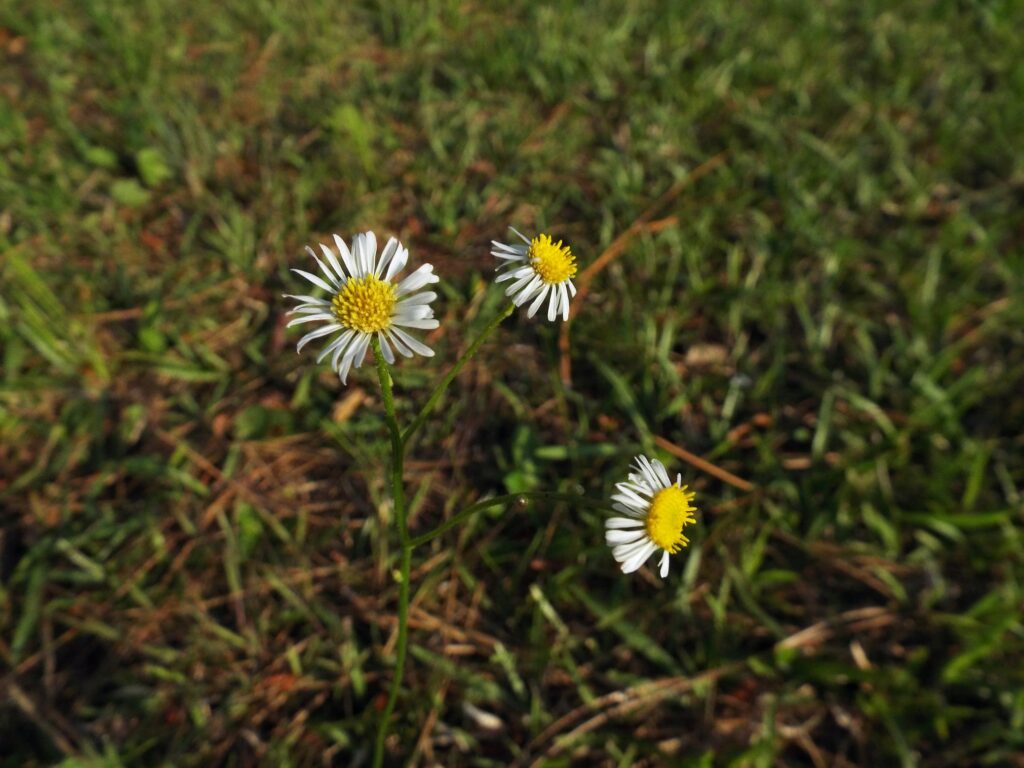
This week for Flora and Fauna Friday, we have a pastel spring thing. This week we’re appreciating the Fleabanes, genus Erigeron.
Fleabanes are a member of the Aster family and, like all the other members, they have a compound head flower. Their flowers are a white to pastel pink with a rich yellow center. Fleabanes are different than most asters in that they have both very small and very complex flowers. These half inch or smaller flowers can sometimes possess over 150 ray florets per bloom! (That doesn’t even count the disc florets!) There are four species of Fleabane native to our island: Oakleaf (E. quercifolius), Daisy (E. strigosus), Early Whitetop (E. vernus), and Philadelphia (E. philadelphicus).
Oakleaf Fleabane has large lobed leaves that resemble a White Oak’s wrapped in a velvet coat of hairs. The plants are short and don’t get more than a foot high. Their flowers are on the showy end and tend towards being strongly pink with many ray florets. Oakleaf Fleabane prefers partially-shaded, moist forest openings and tend to grow in large patches. They bloom from mid to late spring.

Daisy Fleabane has thin blade-like leaves with little pubescence. The plants can grow up to three feet high and have a sparse, open look to them. The flowers are primarily white and are roughly the same size and complexity as Oakleaf Fleabane’s. Daisy Fleabane prefers sunny, dry and sandy areas where other vegetation is sparse. It blooms from mid-spring through summer.

Early Whitetop Fleabane boasts small but oval succulent leaves. It can reach two feet in height with leafless flower stalks. Each flower stalk is topped with a half dozen or so flowers that are strongly white with a bright yellow center, resembling Asters (Symphyotrichum spp.) more than Fleabanes. Early Whitetop Fleabane grows in moist and sandy soil, particularly in Pine Savannas. It blooms in early spring.
Philadelphia Fleabane is very similar to Oakleaf Fleabane in many respects. However, it’s leaves are less deeply lobed and lack much of any velvet. The flower stalks tend to be taller with more prominent leaves and bloom later into the summer.